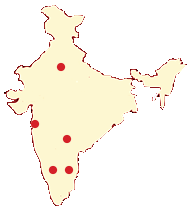Overview
Definition :
Blood typing is a method to tell what specific type of blood you have. What type you have depends on whether or not there are certain proteins, called antigens, on your red blood cells.
- Type A
- Type B
- Type AB
- Type O
Your blood type (or blood group) depends on the types that are been passed down to you from your parents.
How The Test Is Performed ?
Blood is drawn from a vein, usually from the inside of the elbow or the back of the hand. The puncture site is cleaned with a germ-killing product. An elastic band is placed around the upper arm to apply pressure, which causes the vein to swell with blood.
A needle is inserted into the vein, and the blood is collected into a tube. During the procedure, the elastic band is removed to restore circulation. Once the blood has been collected, the needle is removed, and a band-aid or gauze is applied.
In infants or young children, the area is cleansed with antiseptic and punctured with a sharp needle or a lancet. The blood may be collected in a pipette (small glass tube), on a slide, onto a test strip, or into a small container. A bandage may be applied if there is any bleeding.
The test to determine your blood group is called ABO typing. Your blood sample is mixed with antibodies against type A and B blood, and the sample is checked to see whether or not the blood cells stick together (agglutinate). If blood cells stick together, it means the blood reacted with one of the antibodies.
The second step is called back typing. The liquid part of your blood without cells (serum) is mixed with blood that is known to be type A and Type B. Persons with Type A blood have anti-B antibodies, and those with Type B blood have anti-A antibodies. Type O blood contains both types of antibodies. These two steps can accurately determine your blood type.
Blood typing is also done to tell whether or not you have a substance called Rh factor on the surface of your red blood cells If you have this substance, you are considered Rh+ (positive). Those without it are considered Rh- (negative). Rh typing uses a method similar to ABO typing.
Why The Test Is Performed ?
This test is done to determine a person's blood type. Health care providers need to know your blood type when you get a blood transfusion or transplant, because not all blood types are compatible with each other.
For example:
- If you have type A blood, you can only receive types A and O blood.
- If you have type B blood, you can you can only receive types B and O blood.
- If you have type AB blood, you can only receive types A, B, AB, and O blood.
- If you have type O blood, you can you can only receive type O blood.
Type O blood can be given to anyone with any blood type. That is why people with type O blood are called universal donors.
Risks
Risks associated with taking blood may include:
- Fainting or feeling light-headed
- Multiple punctures to locate veins
- Excessive bleeding
- Hematoma (blood accumulating under the skin)
- Infection (a slight risk any time the skin is broken)
For more information, medical assessment and medical quote
as email attachment to
Email : - info@wecareindia.com
Contact Center Tel. (+91) 9029304141 (10 am. To 8 pm. IST)
(Only for international patients seeking treatment in India)










